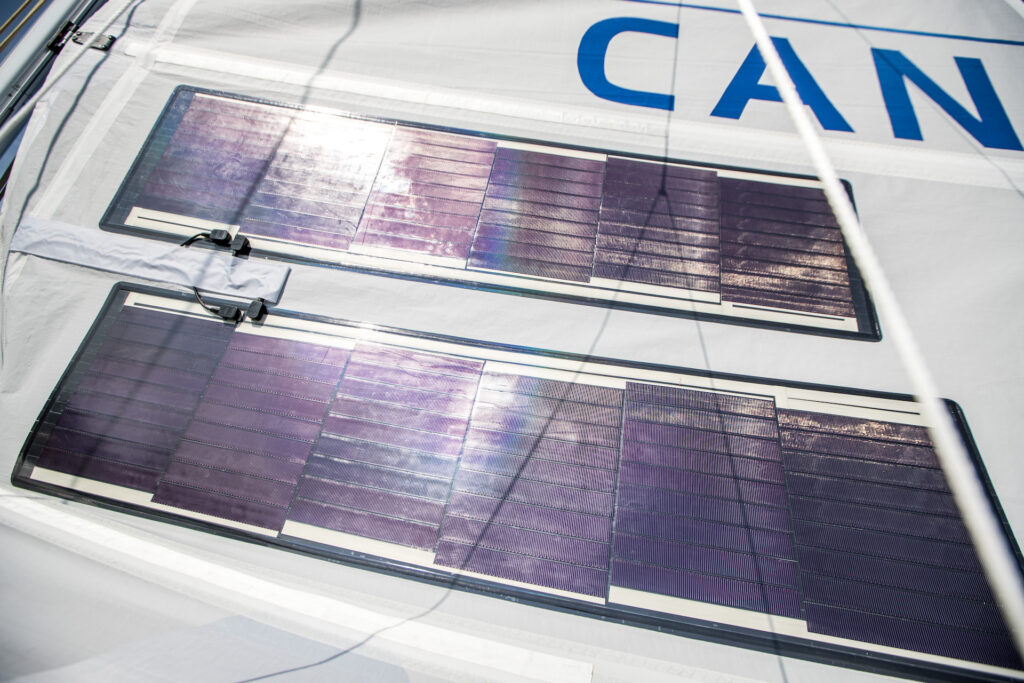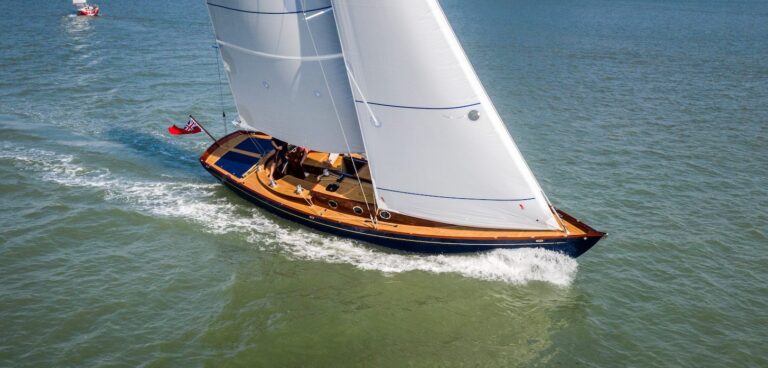Spirit Yachts says it has successfully delivered its new Spirit 44CR(e) to her Canadian owner. Based on the Spirit cruiser racer (CR) design, the company notes its 44CR(e) was commissioned for an eco-conscious customer who set the company a goal of “near total energy self-sufficiency”. The ‘e’ denotes the yacht’s electric drive system.
The 44ft (13.4m) sloop-rigged sailing yacht has a lightweight (65kg) Oceanvolt ServoProp15 sail drive, which is powered by 48V DC batteries (total capacity 30.4kWh, made up of 16 x 1.9kWh batteries). The electric drive system uses hydro generation via the electronically controlled pitch propeller to regenerate the batteries while sailing. Regeneration is boosted by solar panels on the mainsail and the aft deck.
Spirit Yachts managing director Nigel Stuart commented, “The original brief from the owner was for a yacht that would sail well in the light winds of British Columbia. The yacht also needed to deliver the lowest possible carbon footprint during its build and when operating, as well as having the flexibility to upgrade the systems when technology advances. Without a generator on board, the owner will need to be mindful of energy consumption, but with careful management of battery power there will be no sacrifice on any luxuries. The yacht has air-conditioning, heating and electric toilets, all of which make life on board very comfortable.”
Regeneration depends on sailing speed, but the company has calculated that 1.5kW of regeneration at 8kts of speed is feasible. Depending on the weather, solar panels on the deck and the mainsail can also regenerate a combined total of 1.47kW.
Two Solbian solar panels are integrated into the aft Lignia Yacht deck and support the drive system by recharging the batteries. The panels, which can be walked over, serve as the hatch covers for two large lazarettes below, one of which houses a tender with an electric motor.
To deliver on the brief of a yacht capable of performing well in especially light winds, Spirit Yachts fitted a taller mast and a larger mainsail than on a standard 44CR rig. It has also worked with OneSails GBR (East) to develop a solar solution for the yacht’s sail wardrobe. John Parker from OneSails GBR (East) explained, “We have collaborated with Solar Cloth System to integrate thin cell PV panels into the yacht’s 4T Forte main sail as a source of electrical generation.”
French company Solar Cloth System developed the technology, which is officially called Powersails. “Due to the high modulus construction of the composite material,” Parker continued, “the impact of the PV panels will be minimal in terms of the sail’s characteristics and performance. The technology is cutting edge and to my knowledge it is first project of its kind in the UK.”
Spirit Yachts founder and chief designer Sean McMillan remarked, “One of the great joys with this particular yacht was the freedom afforded by the lack of a large diesel engine, which would normally need to sit on the centerline and take up a considerable amount of space. By having a much smaller electric drive system, the owner is able to have a twin aft cabin and a more spacious central living area for living aboard and entertaining.”
The owner of the Spirit 44CR(e), christened Avvento, is Vincent Argiro, a retired technology entrepreneur living, sailing, racing and exploring in British Columbia. Commenting on the yacht he said, “Avvento is meant to be a defining prototype of an energy self-sufficient and sustainably built sailing vessel; a living laboratory and research platform for proving out all the technologies and practices that make eco-sailing attractive to many others. She will soon be live on the internet for all to study her ‘energy metabolism’ wherever in the world she is!” He also plans to launch a website, which will track the yacht’s energy usage and regeneration.




